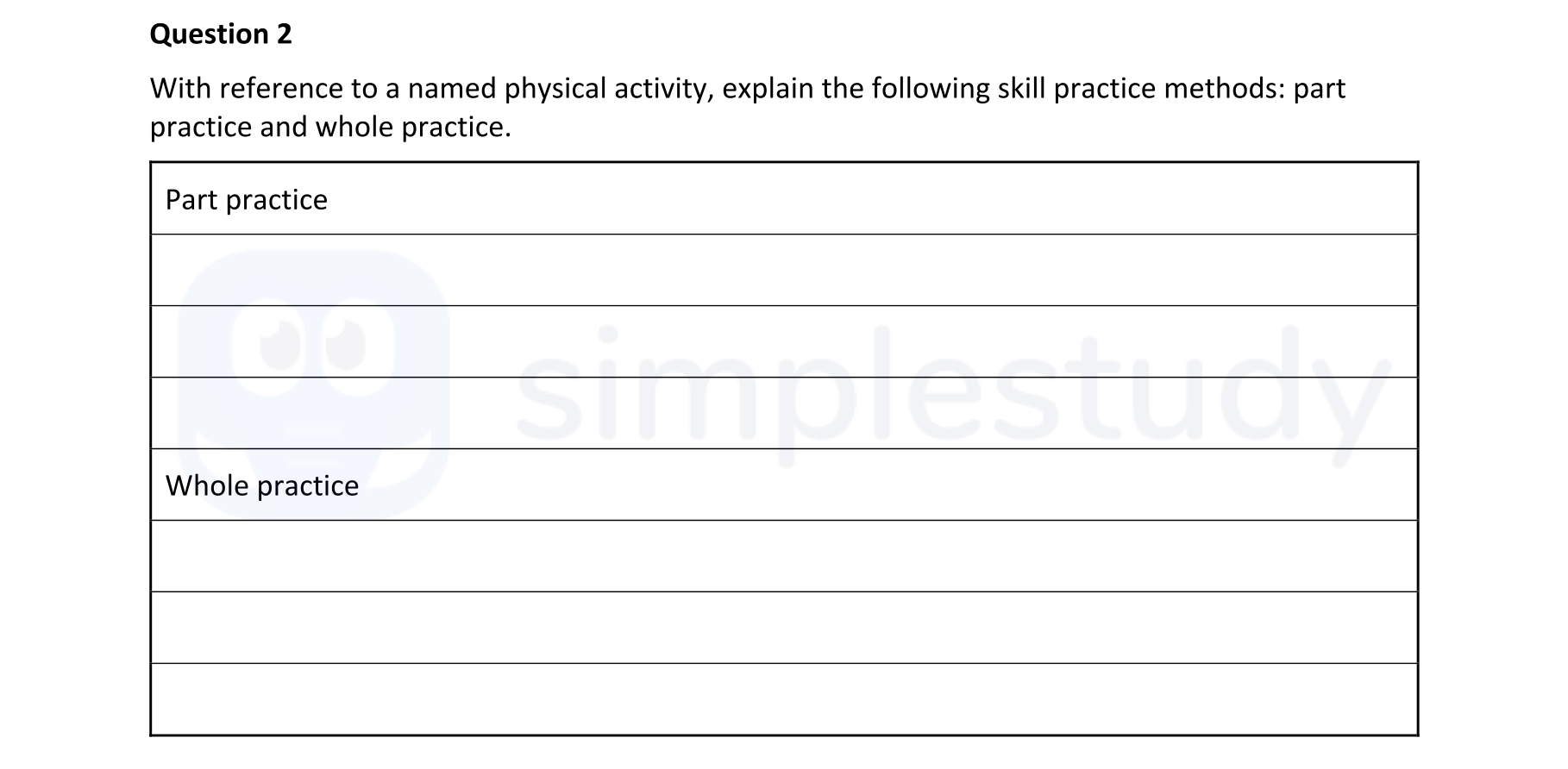Photo AI
With reference to a named physical activity, explain the following skill practice methods: part practice and whole practice - Leaving Cert Physical Education - Question 2 - 2021
Question 2

With reference to a named physical activity, explain the following skill practice methods: part practice and whole practice. Part practice Whole practice
Worked Solution & Example Answer:With reference to a named physical activity, explain the following skill practice methods: part practice and whole practice - Leaving Cert Physical Education - Question 2 - 2021
Step 1
Part practice
Answer
Part practice involves breaking a skill down into its smaller components, which are then practiced in isolation. This method is particularly beneficial when a skill is complex and consists of distinct parts that require separate attention.
For example, consider the basketball layup. The layup consists of various stages: the approach, the jump, the release, and the follow-through. By practicing each of these parts separately, an athlete can focus on perfecting each movement before combining them into the whole skill.
Step 2
Whole practice
Answer
Whole practice, on the other hand, entails practicing the skill in its entirety from start to finish. This approach is effective for skills that are relatively simple or when the components of the skill are closely interrelated.
An example of whole practice is running. When a runner trains, they typically practice running as a whole rather than breaking it down into individual parts, as the rhythm and flow of running require the integration of all movements to develop efficiency.
